Garlic Growing Tips: Unlock the secrets to a thriving, pungent harvest right in your own backyard! Have you ever dreamed of pulling up plump, juicy garlic bulbs, bursting with flavor, ready to elevate your culinary creations? I know I have! For centuries, garlic has been more than just a kitchen staple; it’s been a symbol of protection, a medicinal marvel, and a culinary cornerstone across cultures. From ancient Egypt, where it fueled the pyramid builders, to modern-day kitchens worldwide, garlic’s legacy is undeniable.
But let’s be honest, sometimes growing garlic can feel a little intimidating. Maybe you’ve tried before with less-than-stellar results, or perhaps you’re a complete beginner eager to get your hands dirty. That’s where these garlic growing tips come in! I’m here to share my tried-and-true DIY tricks and hacks that will transform your gardening game. Imagine the satisfaction of harvesting your own homegrown garlic, knowing exactly where it came from and how it was grown.
In this article, we’ll dive into everything you need to know, from selecting the right garlic variety for your climate to mastering the art of planting, watering, and pest control. So, grab your gardening gloves, and let’s embark on this exciting journey to cultivate a bountiful garlic harvest together! You’ll be amazed at how easy and rewarding it can be.
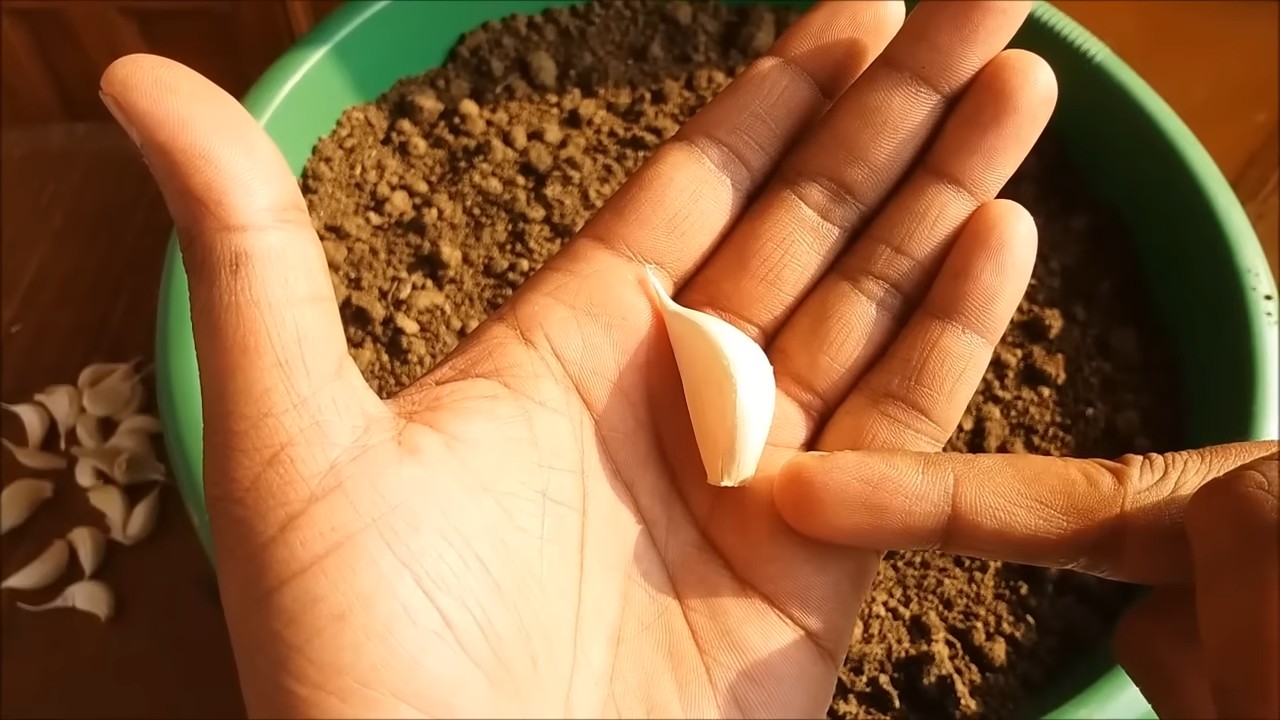
Grow Your Own Garlic: A Beginner’s Guide to a Bountiful Harvest
Hey there, fellow gardening enthusiasts! I’m so excited to share my tried-and-true method for growing garlic. It’s surprisingly easy, and nothing beats the flavor of homegrown garlic. Plus, you’ll be the envy of all your foodie friends! Let’s dive in!
Choosing the Right Garlic
Before we get our hands dirty, let’s talk about garlic varieties. Not all garlic is created equal, and choosing the right type for your climate is crucial for success.
* Hardneck Garlic: This type is best suited for colder climates. It produces a flower stalk called a scape, which you can harvest and enjoy (more on that later!). Hardneck varieties generally have a more complex and robust flavor. Popular choices include ‘German Extra Hardy,’ ‘Music,’ and ‘Chesnok Red.’
* Softneck Garlic: If you live in a warmer climate, softneck garlic is your best bet. It doesn’t produce a scape and is known for its long storage life. This is the kind you often see braided. ‘California Early’ and ‘Silverskin’ are common softneck varieties.
Tip: Buy your garlic from a reputable source, like a local nursery or seed company. Avoid using garlic from the grocery store, as it may have been treated to prevent sprouting.
Preparing for Planting
Okay, now that we’ve chosen our garlic, let’s get ready to plant!
* Timing is Key: The best time to plant garlic is in the fall, about 4-6 weeks before the ground freezes. This allows the cloves to establish roots before winter sets in. In warmer climates, you can plant in late fall or early winter.
* Location, Location, Location: Garlic needs at least 6 hours of sunlight per day. Choose a spot in your garden that gets plenty of sunshine.
* Soil Preparation: Garlic loves well-drained soil that’s rich in organic matter. Amend your soil with compost or well-rotted manure before planting. This will provide the garlic with the nutrients it needs to thrive.
* Testing the Soil: A soil test can help you determine if your soil is lacking any essential nutrients. Garlic prefers a slightly acidic to neutral soil pH (around 6.0 to 7.0).
Planting Your Garlic
Alright, the moment we’ve been waiting for! Let’s get those cloves in the ground!
1. Separate the Cloves: Gently separate the cloves from the bulb, being careful not to damage them. Plant only the largest, healthiest cloves, as these will produce the biggest bulbs.
2. Dig the Holes: Dig holes that are about 4-6 inches deep and 6-8 inches apart. If you’re planting multiple rows, space the rows about 10-12 inches apart.
3. Plant the Cloves: Place each clove in a hole, pointy side up. This is important! The pointy side is where the leaves will emerge.
4. Cover with Soil: Cover the cloves with soil and gently firm the soil around them.
5. Water Well: Water the planting area thoroughly. This will help settle the soil and encourage root growth.
6. Mulch, Mulch, Mulch: Apply a thick layer of mulch (straw, leaves, or wood chips) over the planting area. Mulch helps retain moisture, suppress weeds, and protect the garlic from extreme temperatures.
Caring for Your Garlic
Now that our garlic is planted, it’s time to provide it with the care it needs to flourish.
* Watering: Garlic needs consistent moisture, especially during the spring when it’s actively growing. Water deeply whenever the soil feels dry to the touch. Avoid overwatering, as this can lead to rot.
* Weeding: Keep the planting area free of weeds. Weeds compete with garlic for nutrients and water. Hand-pull weeds carefully to avoid disturbing the garlic roots.
* Fertilizing: Garlic is a heavy feeder, so it benefits from regular fertilization. In the spring, when the plants start to grow, fertilize with a balanced fertilizer or a nitrogen-rich fertilizer. You can also side-dress with compost or well-rotted manure.
* Scapes (Hardneck Garlic Only): If you’re growing hardneck garlic, you’ll notice a flower stalk (scape) emerging in the spring. Cut off the scapes when they start to curl. This will encourage the plant to put more energy into bulb development. Don’t throw the scapes away! They’re delicious and can be used in pesto, stir-fries, or grilled.
Harvesting Your Garlic
The moment of truth! Harvesting your garlic is the most rewarding part of the process.
* When to Harvest: Garlic is typically ready to harvest in mid-summer, when the lower leaves start to turn yellow and brown. Don’t wait until all the leaves have died back, as this can indicate that the bulbs are overripe.
* How to Harvest: Loosen the soil around the garlic bulbs with a garden fork or trowel. Gently lift the bulbs from the ground, being careful not to damage them.
* Curing Your Garlic: Curing is essential for long-term storage. Brush off any excess soil from the bulbs, but don’t wash them. Tie the garlic plants together in bundles of 4-6 bulbs and hang them in a well-ventilated, dry, and shady place for 2-4 weeks.
* Storing Your Garlic: Once the garlic is cured, trim the roots and stalks. Store the bulbs in a cool, dry, and dark place. Properly cured garlic can last for several months.
Troubleshooting
Even with the best care, you might encounter some challenges along the way. Here are a few common problems and how to address them:
* Garlic Rust: This fungal disease causes orange or yellow spots on the leaves. Improve air circulation by spacing plants properly and removing infected leaves.
* Onion Maggots: These pests can damage the roots of garlic plants. Use row covers to prevent adult flies from laying eggs near the plants.
* White Rot: This soilborne disease causes the bulbs to rot. Avoid planting garlic in areas where you’ve had problems with white rot in the past.
Enjoying Your Harvest
Congratulations! You’ve successfully grown your own garlic! Now it’s time to enjoy the fruits (or rather, bulbs) of your labor. Use your homegrown garlic in all your favorite recipes. It’s so much more flavorful than store-bought garlic. You can also save some of your best bulbs for planting next year.
Bonus Tip: Garlic is a great companion plant for many vegetables, including tomatoes, peppers, and eggplant. It helps repel pests and improve the flavor of these crops.
I hope this guide has inspired you to grow your own garlic. It’s a rewarding experience that will add flavor and freshness to your kitchen. Happy gardening!
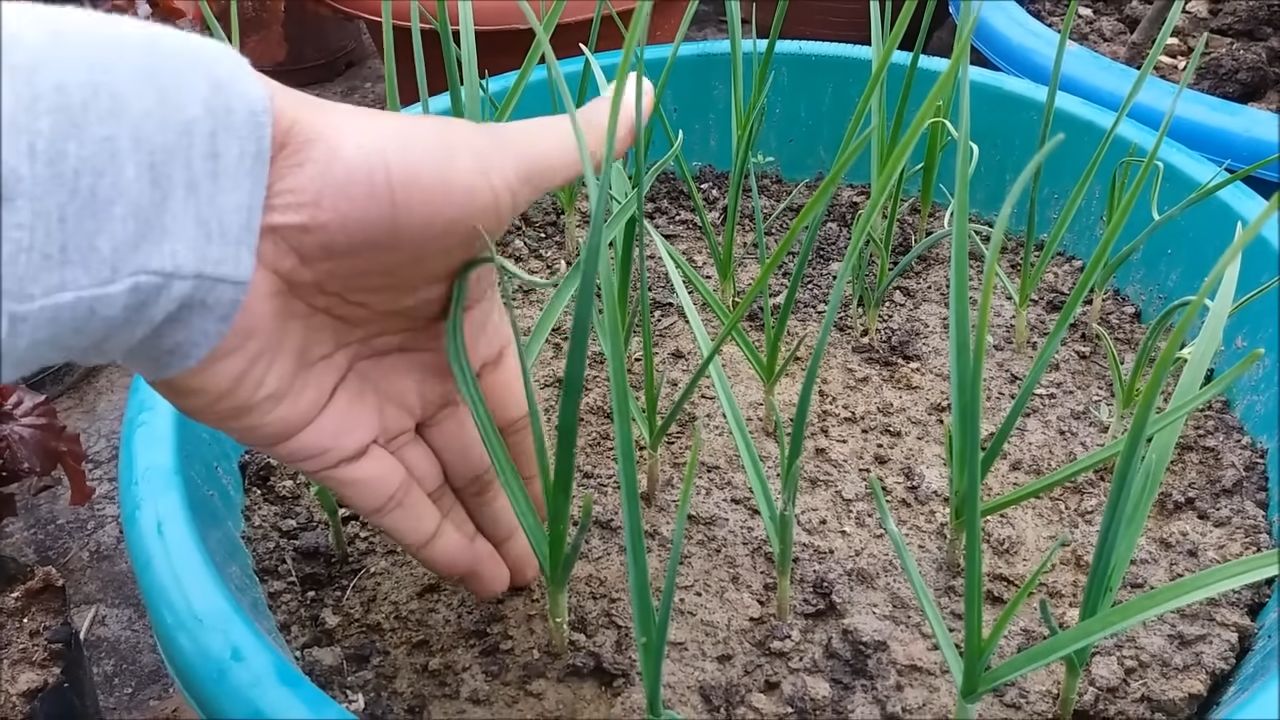
Conclusion
So, there you have it! Growing your own garlic, especially using these simple DIY tricks, is not just a rewarding experience; it’s a game-changer for your kitchen and garden. Forget those bland, imported cloves from the supermarket. Imagine the robust, pungent flavor of freshly harvested garlic, grown with your own two hands. The difference is truly remarkable.
This isn’t just about saving a few dollars (though that’s a definite perk!). It’s about connecting with the food you eat, understanding its journey from seed (or clove, in this case!) to table, and enjoying the unparalleled satisfaction of nurturing something from the earth. Plus, you’ll have a constant supply of fresh, organic garlic right at your fingertips.
Why is this a must-try? Because it’s easy, cost-effective, and yields incredible results. You don’t need a sprawling farm or years of gardening experience. With a little planning and these straightforward techniques, anyone can successfully grow their own garlic.
Think about the possibilities! You can experiment with different varieties of garlic, each offering its unique flavor profile. Try growing softneck garlic for braiding and long-term storage, or hardneck garlic for its flavorful scapes, which are delicious sautéed or added to pesto. You could even try growing elephant garlic, which, despite its name, is technically a type of leek, but offers a milder, sweeter garlic flavor.
Don’t be afraid to get creative with your planting methods. While we’ve focused on basic soil planting, you can also explore container gardening for smaller spaces or even hydroponic garlic growing for a more controlled environment. The key is to adapt the techniques to your specific needs and resources.
We’ve covered the essentials, from selecting the right cloves to providing adequate sunlight and water. We’ve also shared some valuable DIY tricks to help you maximize your yield and protect your crop from pests and diseases. Now, it’s your turn to put these tips into action.
We wholeheartedly encourage you to embark on this garlic-growing adventure. It’s a small investment of time and effort that yields a bountiful harvest of flavor and satisfaction. And remember, even if you encounter a few challenges along the way, don’t give up! Gardening is a learning process, and every mistake is an opportunity to grow (pun intended!).
Once you’ve harvested your first crop of homegrown garlic, we’d love to hear about your experience. Share your photos, tips, and stories in the comments below. Let’s create a community of garlic growers, sharing our knowledge and inspiring others to discover the joys of growing their own food. So, grab some cloves, get your hands dirty, and prepare to be amazed by the magic of homegrown garlic! This **garlic growing** journey is one you won’t regret.
Frequently Asked Questions (FAQ)
Q: What kind of garlic should I plant?
A: The best type of garlic to plant depends on your climate and personal preferences. Generally, there are two main types: hardneck and softneck. Hardneck garlic is more cold-hardy and produces flavorful scapes (curly flower stalks) that can be eaten. Softneck garlic is better suited for warmer climates and stores for a longer period. Elephant garlic, while often called garlic, is actually a type of leek with a milder flavor. Research which varieties thrive in your region and choose based on your taste preferences and storage needs. Consider visiting a local farmers market or nursery to see what varieties are popular in your area.
Q: When is the best time to plant garlic?
A: The ideal time to plant garlic is in the fall, typically 4-6 weeks before the ground freezes. This allows the cloves to establish roots before winter sets in. In colder climates, this is usually around October or November. In warmer climates, you can plant later, around December or January. The key is to give the cloves enough time to develop roots but not so much time that they start to sprout above ground before winter.
Q: How deep should I plant garlic cloves?
A: Plant garlic cloves about 2-3 inches deep, with the pointed end facing up. Space them about 6-8 inches apart in rows that are 12-18 inches apart. This spacing allows for adequate air circulation and room for the bulbs to grow.
Q: What kind of soil is best for growing garlic?
A: Garlic prefers well-drained, fertile soil that is rich in organic matter. Amend your soil with compost or well-rotted manure before planting to improve its drainage and fertility. A slightly acidic to neutral pH (around 6.0-7.0) is ideal. Avoid planting garlic in heavy clay soil, as this can lead to rot.
Q: How much sunlight does garlic need?
A: Garlic needs at least 6 hours of direct sunlight per day to thrive. Choose a planting location that receives plenty of sunlight throughout the growing season.
Q: How often should I water garlic?
A: Water garlic regularly, especially during dry periods. Keep the soil consistently moist but not waterlogged. Avoid overwatering, as this can lead to rot. A good rule of thumb is to water deeply once a week, or more often if the soil dries out quickly.
Q: How do I fertilize garlic?
A: Garlic benefits from regular fertilization. Apply a balanced fertilizer in the spring, when the plants start to actively grow. You can also side-dress with compost or well-rotted manure. Avoid over-fertilizing, as this can lead to excessive foliage growth at the expense of bulb development.
Q: How do I know when my garlic is ready to harvest?
A: Garlic is typically ready to harvest in mid-summer, when the lower leaves start to turn yellow and brown. The scapes (if you’re growing hardneck garlic) will also start to curl and straighten. To check if the bulbs are ready, carefully dig up a few plants and examine the bulbs. They should be plump and well-formed, with papery skins.
Q: How do I cure garlic after harvesting?
A: Curing garlic is essential for long-term storage. After harvesting, gently brush off any excess soil and tie the plants together in bundles. Hang the bundles in a cool, dry, well-ventilated place for 2-4 weeks. The garlic is cured when the necks are dry and the outer skins are papery.
Q: How do I store garlic?
A: Store cured garlic in a cool, dry, well-ventilated place, such as a pantry or basement. Avoid storing garlic in the refrigerator, as this can cause it to sprout. Properly cured and stored garlic can last for several months.
Q: Can I grow garlic in containers?
A: Yes, you can grow garlic in containers, but you’ll need to choose a large container (at least 12 inches in diameter) and use a well-draining potting mix. Plant the cloves as you would in the ground, and water regularly. Container-grown garlic may require more frequent fertilization than garlic grown in the ground.
Q: What are garlic scapes, and what do I do with them?
A: Garlic scapes are the curly flower stalks that grow from hardneck garlic plants. They are a delicious and versatile ingredient that can be used in a variety of dishes. Harvest the scapes when they are still tender and curly, before they start to straighten. You can sauté them, grill them, add them to pesto, or use them in stir-fries.
Q: How do I prevent pests and diseases from affecting my garlic crop?
A: To prevent pests and diseases, choose disease-resistant varieties of garlic, plant in well-drained soil, and practice good sanitation. Rotate your crops regularly to avoid the buildup of soilborne diseases. You can also use organic pest control methods, such as insecticidal soap or neem oil, to control pests.
Q: Can I save cloves from my harvest to plant next year?
A: Yes, you can save cloves from your harvest to plant next year. Choose the largest and healthiest bulbs and separate the cloves. Store the cloves in a cool, dry place until planting time. This is a great way to ensure a continuous supply of homegrown garlic.

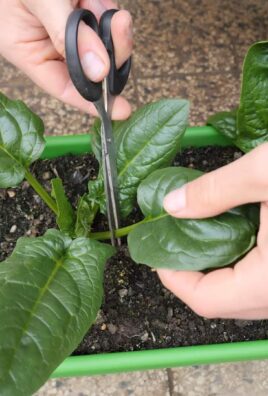
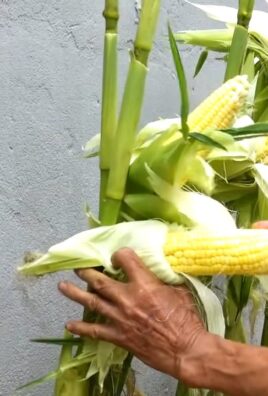
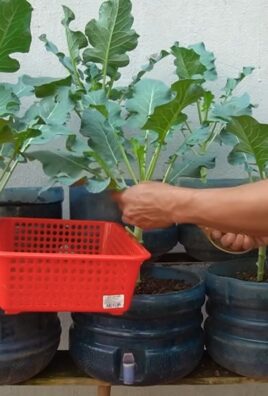
Leave a Comment